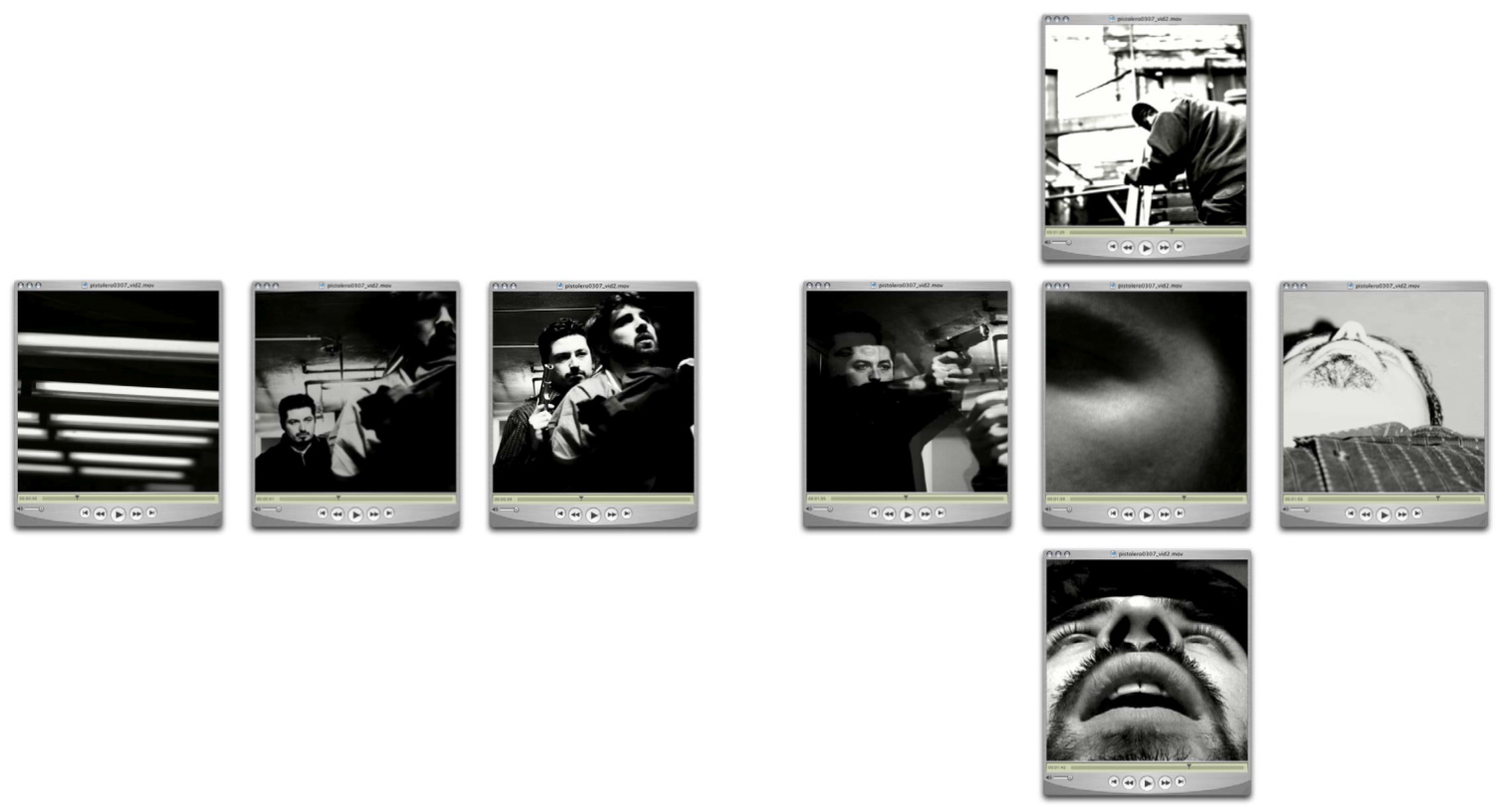Juan Morales, MFA ’07
project
The purpose of this case study was to explore how photography and sound could be used to create a limited sequence of images that tell a story. The story itself is then segmented into parts that can be triggered and resequenced by the user at a keyboard or midi device. This triggering of alternative paths in the plot allows the user to explore the narrative from the perspectives of the different characters. In the end the narrative becomes potentially more immersive and provides a more dynamic storytelling experience.
The first step in the process was to build a reference movie of the narrative. The purpose for the reference movie was to tell the story uncut and expose the user to the basic plot of the narrative. This gives the user a beginning perspective from which to explore the content and points of view. To create the story photographs were taken to depict the series of events that occurs. During this picture taking various locations were selected for their ability to illustrate a very tangible sense of the character’s cultural and economic station in life. The settings chosen reflect the blue-collar industrial backdrop of the story with an implied element of economic adversity that carries with it the grit and noise of starkly contrasted black and white imagery. Partly an exercise in conveying the character’s less than hopeful sense of place, the imagery is at times dark, ominously lit and does nothing to conceal the urban plight of the industial setting the main character’s are rooted in.
The basic plotline of the story is one of a man who seeks vengeance against another man that has wronged him but falls short of his convictions upon reaching the moment prior to taking the other man’s life. The image sequences follow the man entering a building and confronting the victim and his own hesitations until the screen goes black and only a gunshot is heard. After the gunshot is heard a series of images flashes on screen that alludes to the second man’s acts of suspicion and crime. It is only after the montage of images fades out that we see the second man opening his eyes in the realization that he is still alive. At that moment we realize that the pistolero (Spanish word for “shooter”) turned the gun on himself realizing that the crime he was going to commit was far greater than the one committed against him. The variable story sections give the user the ability to swap out one montage for another. The difference in the montages reflect the instant after the gunshot and the images that run through the minds of both men. The availability of variable sound accompaniments (essentially soundtracks) also provide more dramatic texturing to alter the feel of the piece as it is resequenced.
Reflection
As I worked through the various stages of the project one of the most difficult tasks was taking each picture with the intent of conveying a specific event in the story meaningfully and efficiently. Essentially, the most difficult challenge was telling a story with my photographs. Taking a photograph to show a particular event taking place between two characters at an exact moment in time–all in one frame–is not an easy task. After making several unsuccessful attempts at creating a mood but not the actions that made up the events in the story I turned to comic books and graphic novels to see how they did it. After flipping through a few pages of each it became clear to me that I needed to capture not just the scenery and the mood or behavior it might imply. I needed to plan and stage the actions deliberately so that a clear series of events could be followed from one frame to the next.
I then changed my process. I had begun the project by going out and shooting raw material that I could then craft into my story. I had also created a scratch soundtrack for my sounds to give the material I gathered the right mood and tonality. The result was underwhelming. While I had captured the mood and feel of the story and even given it added dimension with cinematic sounds and effects–no one could tell me what the story was about it. I had made lush sounds and pretty pictures but had not yet told a story. I then decided I needed to storyboard my story and use my hands again to sketch the frames of my movie. Without worrying about where I was going to shoot or how I began to sketch the characters and events in my story. The story then began to take shape. I created one sketch after another and diagrammed my complex narrative into a series of drawings that I could map sounds to and then apply the proper mood and place treatments.
It worked. I brought my sketches into class and my classmates got it. They saw the actions, the change in scenery, the change in event from one frame to the next. The other enlightening part of this process was what followed–the filtering and editing. Before even picking up the camera again I tossed more than half of my drawings and focused on the key scenes. I simplified and focused on reducing the number of shots to what was most necessary to get my point across. I was finally telling a story and now all I had to do was go out and shoot it. Having done that I picked up my camera, scouted new settings and began shooting.
Keywords: narrative sequencing, photography, sound


